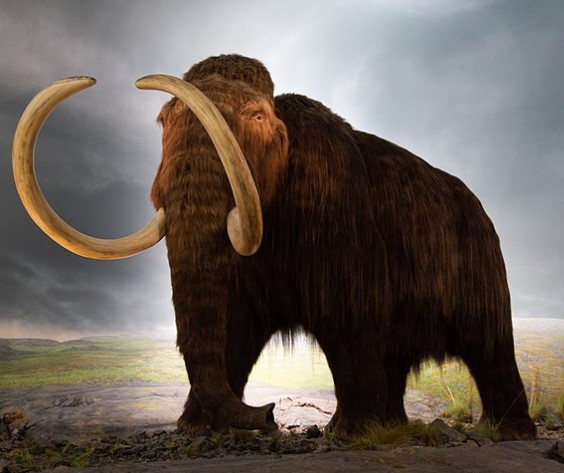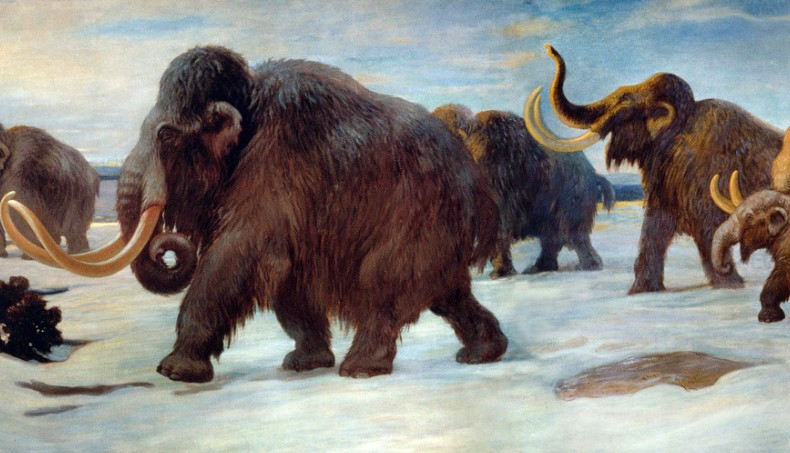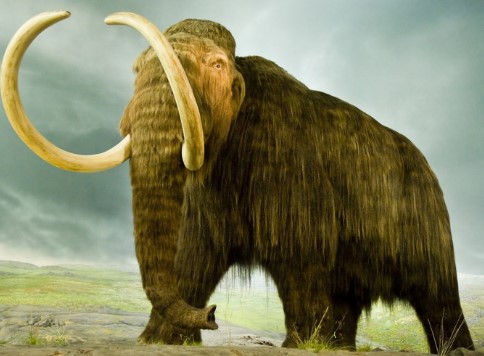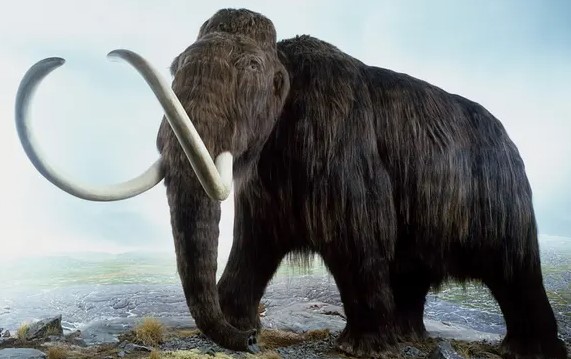







The woolly mammoth is a mammoth that lived during the Pleistocene era. They lived between 300,000 years ago to about 10,000 years ago. They roamed the tundras of Europe, Asia, and North America. The last known group lived until 1650 B.C. which was a thousand years after the Pyramids of Giza in Egypt were built. They mostly lived in the steppe tundra habitat which was also called the mammoth steppe but there is some evidence that shows some populations inhabited forests of present-day Midwestern United States.
Woolly Mammoths were the size of African elephants but had smaller ears to keep them from losing too much body heat. They were covered with two layers of fur to protect them from the cold. The outer layer could be 20 inches long while the thick layer of underwool helped them stay in temperatures as low as -58°F. They also had 15-foot-long tusks which helped them dig under the snow for food like shrubs and grass. They also had a kind of shoulder hump like a grizzly bear which scientists think stored fat that would be useful and provide energy when food is scarce like a camel.
They were related to Asian elephants because of the prominent dome that they had similar to the Asian elephants. Morphological and genetic studies show that they evolved from steppe mammoths (Mammuthus trogontherii) between 800,000 and 600,000 years ago in Asia. Genetic evidence says that they spread to Europe about 200,000 years ago and from Asia across the Bering Land Bridge to North America about 125,000 years ago. Like modern elephants, they most likely gave birth to one calf at a time. Also, the females and their young probably formed herds while the males left the herd at age 10.
Scientists think that woolly mammoths went extinct due to climate change or due to hunting by humans. Other scientists think that it might be a combination of both. Some evidence suggests that small populations of woolly mammoths may have survived in mainland North America until between 10,500 and 7,600 years ago. Other evidence suggests that woolly mammoths persisted until 5,600 years ago on St. Paul Island, Alaska, in the Bering Sea and as late as 4,300 years ago on Wrangel Island, an Arctic island located off the coast of northern Russia, before succumbing to extinction from inbreeding and loss of genetic diversity.
It is by far the best-known of all mammoths. Many specimens of this mammoth have been found frozen in Siberia. These specimens are so well-preserved that scientists have found information on their appearance and behavior. These remains and fossils of teeth have allowed scientists to collect and sequence the DNA. This would be helpful since advances in genetics and reproductive cloning technologies since the 1990s could allow scientists to resurrect the woolly mammoth and bring it back from extinction.